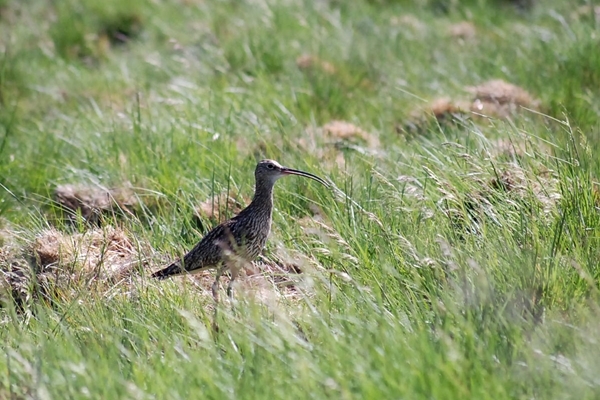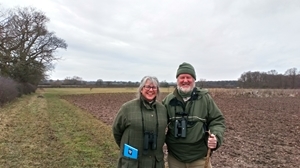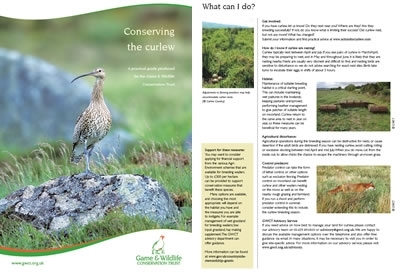
AHEAD of World Curlew Day, GWCT staff have been paying visits to farms in fear of losing their nesting curlews due to the bird’s continuing demise.
Advisors at the Trust have spent the past few months travelling to sites in Norfolk, Suffolk, Worcestershire, Warwickshire and Cornwall, giving practical advice to farmers and land managers on how to conserve breeding curlews on their land.
During these visits, pairs of curlew were seen prospecting for nest sites on arable land, ridge and furrow grassland, meadows and wet grassland. They were even spotted the Jockey Club gallops in Newmarket Heath.
Roger Draycott, who is head of advisory services at GWCT, said: “World curlew day (April 21st) is important in raising awareness about the plight of curlew and enabling everyone involved in curlew conservation to come together with land managers to deliver practical curlew conservation on the ground.”
Last year, GWCT launched Action for Curlew, a campaign aimed at identifying sites with breeding curlew and acting to ensure the rare birds thrive on their land.
More than 700 people responded with sightings of curlew – either breeding, overwintering or historical. GWCT is working with them to ensure people are informed enough to act and reverse these declines. There are just 300 breeding pairs left south of Birmingham which could see them vanish from this region in the next eight years.
Dr Draycott added: “We have been able to visit farmers in central, southern and eastern England that had asked us for advice to help them with their efforts to conserve the nesting curlews they have on their farms, following the campaign’s launch.
 “GWCT advisors visited the farms with Curlew Conservation Advisor Amanda Perkins (pictured with farmer Stephen Smith). Amanda, who also co-ordinates the Curlew Country Project in Shropshire, has built up a wealth of knowledge of curlews in recent years working with farmers to help improve curlew breeding success.”
“GWCT advisors visited the farms with Curlew Conservation Advisor Amanda Perkins (pictured with farmer Stephen Smith). Amanda, who also co-ordinates the Curlew Country Project in Shropshire, has built up a wealth of knowledge of curlews in recent years working with farmers to help improve curlew breeding success.”
In addition to free advisory visits to sites with breeding curlew, the GWCT have been raising awareness in various ways.
The Trust has produced curlew conservation guides for farmers and land managers (see below), led a parliamentary debate on curlew emphasising the need for predator control in future projects, staff have spoken at a series of curlew events and Game Fairs across the country.
Furthermore, GWCT member Richard Negus completed the Northumberland Coastal Marathon in February for Action for Curlew, raising more than £2,500 (you can still donate here).
Anyone with curlews on their farm, particularly in the lowlands and would like help and advice, please contact the Advisory Service on AdvisoryStaff@gwct.org.uk
Conserving the curlew - get your free 8-page guide

What's inside your FREE guide
✓ Introduction - a species in decline
✓ Pressures on breeding
✓ High levels of nest and chick predation
✓ Agricultural nest destruction
✓ Breeding curlew facts
✓ What can I do?
✓ Summary & key points
Download now >
Notes to editors
The Game & Wildlife Conservation Trust – providing research-led conservation for a thriving countryside. The GWCT is an independent wildlife conservation charity which has carried out scientific research into Britain’s game and wildlife since the 1930s. We advise farmers and landowners on improving wildlife habitats. We employ 22 post-doctoral scientists and 50 other research staff with expertise in areas such as birds, insects, mammals, farming, fish and statistics. We undertake our own research as well as projects funded by contract and grant-aid from Government and private bodies. The Trust is also responsible for a number of Government Biodiversity Action Plan species and is lead partner for grey partridge and joint lead partner for brown hare and black grouse.
For information, contact:
Eleanor Williams
Telephone: 07592 025476
Email: press@gwct.org.uk